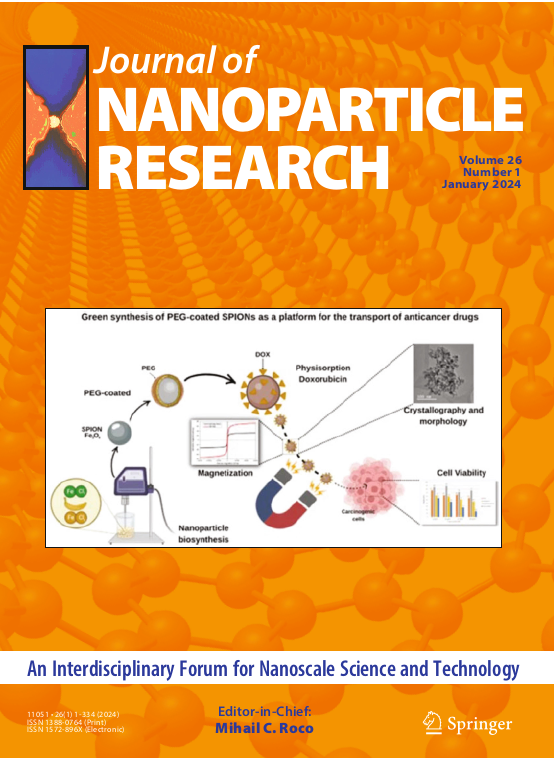喷涂\({\alpha }\) - \({{Fe}}_{2}{{O}}_{3}\): \(Ca\)薄膜线性和非线性光学性质的光谱研究:钙掺杂的影响
摘要
本文报道了掺钙氧化铁薄膜(\({\text{Fe}}_{2}{\text{O}}_{3}:\text{Ca}\))的线性和非线性光谱研究。%, 2 at.%, 5 at.%, and 10 at.%) prepared by the spray pyrolysis technique. X-ray diffraction analysis revealed the formation of hematite \(({\alpha }\)-\({\text{Fe}}_{2}{\text{O}}_{3})\) with a polycrystalline rhombohedral structure and a preferred orientation along the (104) plane. Scanning electron microscopy images showed that the doped samples exhibited a smooth surface compared with undoped \({\alpha }\)-\({\text{Fe}}_{2}{\text{O}}_{3}\). The \(\text{Ca}\)-doped \({\alpha }\)-\({\text{Fe}}_{2}{\text{O}}_{3}\)(5 at.%) thin films displayed a smoother surface than the other films, with an RMS value of 2.49 nm. The linear optical properties, such as transmittance, absorbance, reflectance, band gap energy, and refractive index, were investigated using the UV–VIS-NIR spectrophotometer. The electronic polarizability was estimated using the Clausius-Mosotti relation. The third-order nonlinear optical susceptibility (\({\chi }^{\left(3\right)}\)) and nonlinear refractive index (\({n}_{2}\)) were studied using a spectroscopic method based on Miller’s rule. The results show that 5 at.%\(\text{Ca}\) doping in \({\alpha }\)-\({\text{Fe}}_{2}{\text{O}}_{3}\) enhances the electronic polarizability, which in turn improves the third-order nonlinear optical susceptibility. The results obtained indicate that the synthesized thin films hold promise for applications in laser technology.This work reports on the linear and nonlinear optical spectroscopic study of calcium-doped iron oxide thin films (\({\text{Fe}}_{2}{\text{O}}_{3}:\text{Ca}\)) with various dopant concentrations (0 at.%, 2 at.%, 5 at.%, and 10 at.%) prepared by the spray pyrolysis technique. X-ray diffraction analysis revealed the formation of hematite \(({\alpha }\)-\({\text{Fe}}_{2}{\text{O}}_{3})\) with a polycrystalline rhombohedral structure and a preferred orientation along the (104) plane. Scanning electron microscopy images showed that the doped samples exhibited a smooth surface compared with undoped \({\alpha }\)-\({\text{Fe}}_{2}{\text{O}}_{3}\). The \(\text{Ca}\)-doped \({\alpha }\)-\({\text{Fe}}_{2}{\text{O}}_{3}\)(5 at.%) thin films displayed a smoother surface than the other films, with an RMS value of 2.49 nm. The linear optical properties, such as transmittance, absorbance, reflectance, band gap energy, and refractive index, were investigated using the UV–VIS-NIR spectrophotometer. The electronic polarizability was estimated using the Clausius-Mosotti relation. The third-order nonlinear optical susceptibility (\({\chi }^{\left(3\right)}\)) and nonlinear refractive index (\({n}_{2}\)) were studied using a spectroscopic method based on Miller’s rule. The results show that 5 at.%\(\text{Ca}\) doping in \({\alpha }\)-\({\text{Fe}}_{2}{\text{O}}_{3}\) enhances the electronic polarizability, which in turn improves the third-order nonlinear optical susceptibility. The results obtained indicate that the synthesized thin films hold promise for applications in laser technology.

 求助内容:
求助内容: 应助结果提醒方式:
应助结果提醒方式:


